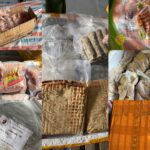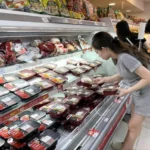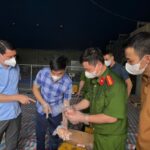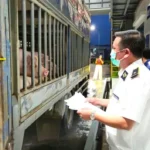Speaking to reporters from Báo Người Lao Động, Ms. Nguyen Thi Huyen, a resident of Binh Thanh District, Ho Chi Minh City, shared a recent experience at the local market. She had purchased apples from the US, Australian oranges, and Korean brown pears, all bearing clear QR codes on their packaging. Assuming that the presence of these codes indicated authenticity and safety, she was shocked to find that scanning them yielded no accessible information, despite trying on multiple devices.
A Mere Facade?
Ms. Huyen expressed her frustration and concern about the prevalence of such deceptive practices in the market. “I trusted the QR codes and believed I was buying genuine, safe products. But scanning them yielded nothing. It’s clear that these codes are just for show, misleading consumers,” she said.
Mr. Tran Minh Tam, a resident of Thu Duc City, Ho Chi Minh City, encountered a similar situation when purchasing apples and pears from a local fruit vendor. The fruits were adorned with seemingly professional QR codes, and the seller assured him that they were imported and of superior quality. However, upon scanning the codes, he was either directed to a foreign-language page with unintelligible symbols or received no information at all. Uncertain about the origin and authenticity of the fruits, Mr. Tam decided against making the purchase.
Across various markets in Ho Chi Minh City, including Cho Nguyen Xi in Binh Thanh District, Cho Tan Dinh in District 1, and Cho Hiep Binh in Thu Duc City, vendors prominently display imported fruits such as Korean brown pears, American apples, Australian oranges, and Chilean grapes, all bearing QR codes on their packaging. Among these, the Korean brown pears are the most popular among consumers.
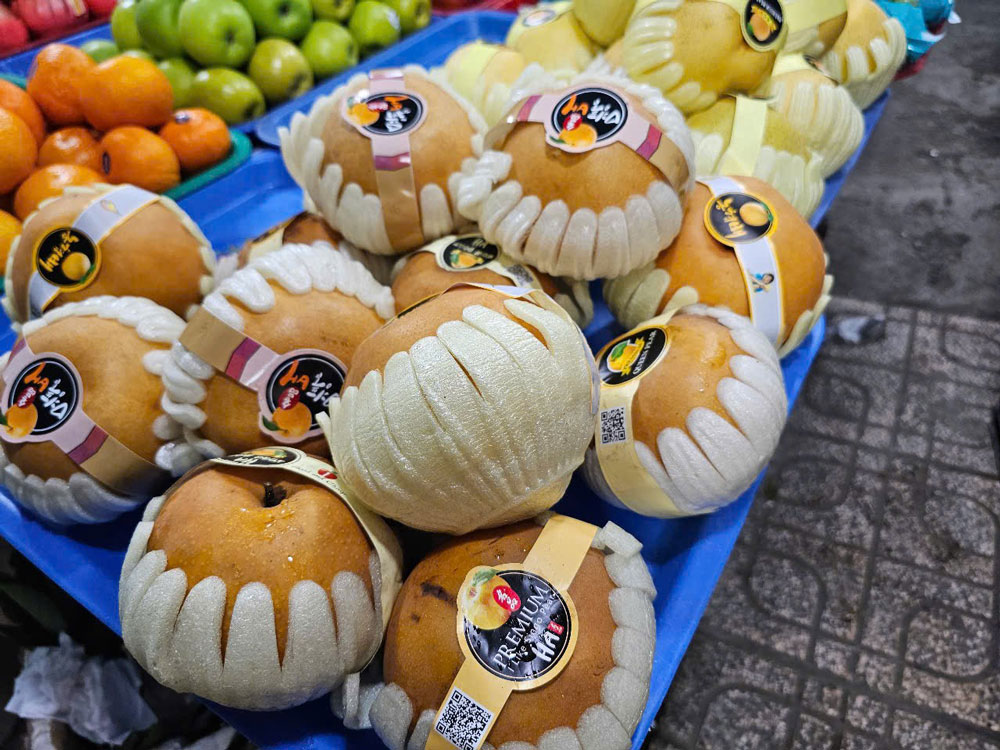
Korean brown pears, adorned with QR codes but yielding no information upon scanning. Photo: LE TINH
At a stall in Cho Hiep Binh, our reporters attempted to scan the QR codes on several products, only to be directed to error pages or receive no information at all. When questioned, the vendor insisted, “These are all imported goods with proper QR codes. The issue must be with your phone; our products are guaranteed to be authentic, so go ahead and enjoy them.”
However, when our reporters tried scanning the codes with different devices, yielding the same negative results, the vendor became agitated and dismissive, suggesting that the problem was not with the products but with the customers’ devices.
A Troubling Reality
Mr. Phuong Andy Tran, representing Saigon Technology Company, expressed concern about the rampant use of QR codes that do not provide reliable traceability. Many products bear these codes, but consumers cannot trace their origins, production sites, or importing entities. This not only misleads consumers but also potentially directs them to strange links containing false or misleading information, influencing their purchasing behavior and psychology.
“To protect consumers,” Mr. Tran emphasized, “there is a need to tighten regulations on products bearing opaque QR codes and severely punish those who deliberately deceive consumers with fake labels. In the long run, advanced traceability technologies like blockchain should be adopted to ensure authenticity and transparency. Consumers have the right to know what they are buying, where it comes from, and whether it is safe.”
Indeed, Korean brown pears, a favorite among consumers, are also a target for counterfeiting. Fake products often resemble the genuine article but are of inferior quality and sold at lower prices, with fraudulent QR codes and altered origins. Mr. Cho Sung Bae, Head of aT Center (under the Korean Ministry of Agriculture) in Ho Chi Minh City, acknowledged this issue and shared the steps taken by the Korean government to address it.
According to Mr. Cho Sung Bae, authentic Korean brown pears imported through official channels will have scannable QR codes that provide verification. In contrast, fake products will have codes that are merely decorative and do not contain any relevant information. Additionally, consumers can inspect the paper labels on the boxes, which should include all the required information for imported goods.
Earlier this year, during an inspection by the Ministry of Agriculture and Rural Development (now the Ministry of Agriculture and Environment), a similar incident occurred in the fresh produce section of the M. An Phu supermarket in Thu Duc City. When the inspection team scanned the QR code on a package of VietGAP beansprouts, the result surprisingly showed blueberries!
As the label was unique to the supermarket, the blame could not be shifted to the supplier. Fortunately, the supermarket’s quality management team promptly provided the original documents proving the authenticity of the beansprouts, attributing the discrepancy to a data entry error.
Experts emphasize that the prevalence of fake or superficial QR codes is a worrying trend that erodes consumer trust. While the law does not currently mandate QR codes on food products, if businesses choose to use them, the accompanying information must be entirely accurate. Any deviation from this should be severely penalized to protect consumers, especially given the recent spate of discoveries involving counterfeit, imitation, and substandard goods.
Traceability Tags Do Not Equate to Food Safety
Dr. Dao Ha Trung, Chairman of the Ho Chi Minh City High-Tech Association, which has implemented numerous domestic and international food traceability projects, including the “pig tagging” program, repeatedly emphasized that traceability tags do not guarantee product quality or food safety. These tags are merely tools to support management processes.
If the movement of food products cannot be traced, managing their quality becomes exceedingly challenging. In the event of an issue, an electronic traceability system enables much faster product recalls than traditional manual record-keeping methods.
Pondering the Pork Conundrum: Hot or Cold?
Recent social media posts have caused a stir, with claims and images suggesting that pork supplied by C.P. Vietnam may be contaminated. The Ministry of Agriculture and Environment has referred the case to the police for investigation. This incident raises a critical question: How is the quality of pork, a staple food for many, being monitored and regulated?
The Chilling Discovery: 20 Tons of Putrid, Moldy Offal Concealed in a Freezer Container
The authorities in Nam Dinh province have seized over 20 tons of frozen animal products that were found to be moldy and emitting an unpleasant odor. The products were also lacking the necessary invoices and documentation, raising further concerns about their safety and legality. This discovery underscores the importance of vigilant enforcement of food safety regulations to protect public health and ensure that only safe and properly sourced products reach consumers.
The Capital’s Surprise: Inter-Departmental Night Inspection of C.P. Company
“Late into the night, the inter-sectoral team of Hanoi conducted an inspection of the slaughtering process at the C.P Vietnam Livestock Joint Stock Company – Branch NM3. This was the second time in just one week that Hanoi authorities inspected C.P’s pig slaughterhouses in the city.”


